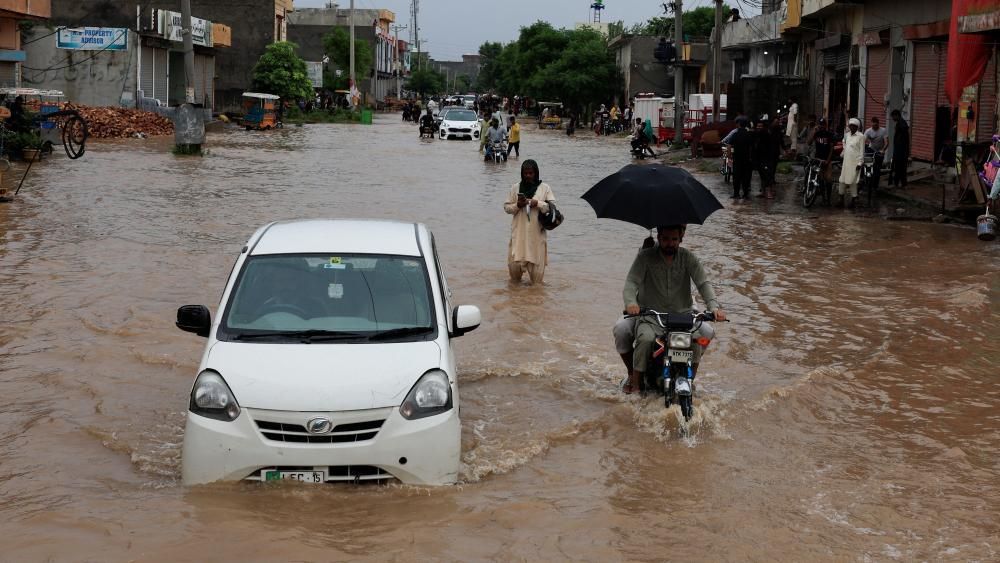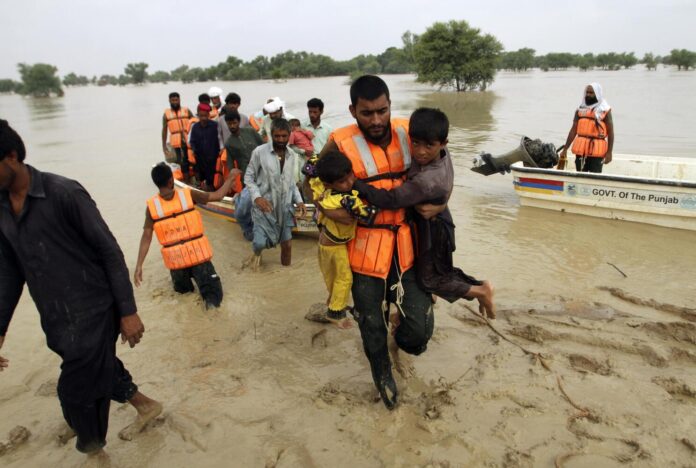Massive Evacuations Across Punjab and Sindh
More than two million residents have been forced to flee their homes in Pakistan’s Punjab province as catastrophic floods continue to devastate the eastern part of the country. Authorities confirmed on Thursday that an additional 150,000 people have also been evacuated from the southern province of Sindh.
Inam Haider Malik, head of Pakistan’s National Disaster Management Authority (NDMA), warned that the number of evacuees could rise further in the coming days as heavy rains show no sign of stopping.
Rising Death Toll and Widespread Destruction

According to a report from the International Medical Corps, more than 900 people have lost their lives since the beginning of the monsoon season in late June. The relentless downpours have submerged villages, destroyed homes, and wiped out large swathes of farmland, leaving millions of families in urgent need of assistance.
The situation is particularly dire as nearly 40% of Pakistan’s population already lives below the poverty line. For many families, losing their homes and crops means losing their only source of livelihood.
Rescue Efforts Underway Amid Dangerous Conditions
Emergency teams are conducting door-to-door rescue operations, using small boats to transport villagers and their livestock to safer areas. However, these missions are fraught with danger due to strong river currents.
Tragically, nine people lost their lives earlier this week when a rescue boat capsized in the Indus River. Just days earlier, five more people died in a similar incident near Jalalpur Pirwala city, highlighting the extreme risks faced by rescuers and evacuees alike.
Residents Reluctant to Leave Their Homes

Despite government warnings, some residents are choosing to stay behind to protect their homes and belongings from looting. Local reports indicate that families in flood-hit areas of Punjab are hesitant to abandon their property, even as waters rise.
Authorities continue to urge people to evacuate, stressing that the priority is saving lives and preventing further tragedies.
Relief Supplies and International Aid
Pakistan’s NDMA has delivered critical supplies including tents, blankets, and portable water filtration devices to displaced families. Malik stated that it may take several weeks before floodwaters recede enough to begin rehabilitation and reconstruction work in the thousands of affected villages.
International support is also arriving. The United Nations has allocated $5 million to help fund Pakistan’s flood response. The United States has approved financial aid and dispatched disaster response teams — marking the first U.S. assistance package during the current administration’s second term.
Flood Impact Beyond Pakistan
The devastation is not limited to Pakistan. Neighboring India has also experienced severe monsoon flooding, with at least 30 reported deaths and over 350,000 people affected. The regional crisis underscores the growing impact of climate change on South Asia, where extreme weather events are becoming more frequent and intense.
Climate Change Declared a National Emergency
Pakistan’s government has declared a climate emergency in response to the disaster. Prime Minister Shehbaz Sharif has instructed officials to prepare a comprehensive 300-day plan to address the country’s growing vulnerability to extreme weather events.
Pakistan’s geography makes it highly susceptible to climate shocks, as the country battles both scorching heatwaves and record-breaking rainfall. Melting glaciers in the north are also creating new lakes that are at risk of bursting, potentially triggering even more flooding in the future.
A Grim Reminder of 2022 Floods
The latest crisis has drawn comparisons to the devastating floods of 2022, which killed over 1,700 people and affected more than 30 million across Pakistan — one of the deadliest disasters in the nation’s history. Experts warn that without significant investment in disaster preparedness and climate adaptation, such catastrophes will only grow more frequent and severe.
Sources: The Guardian

